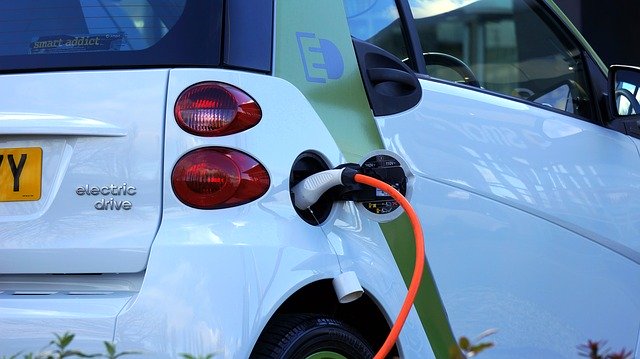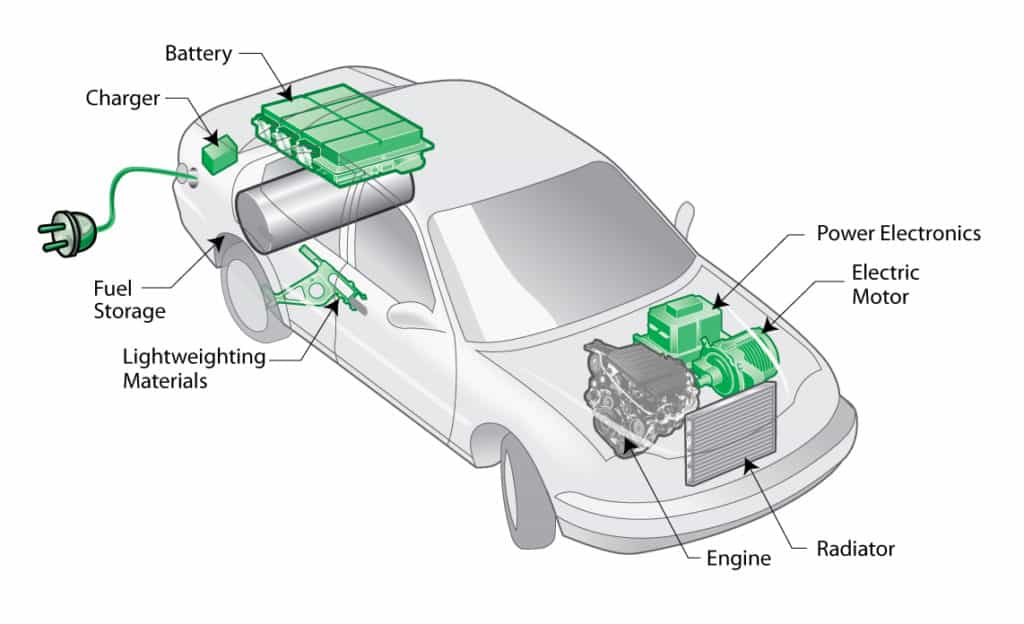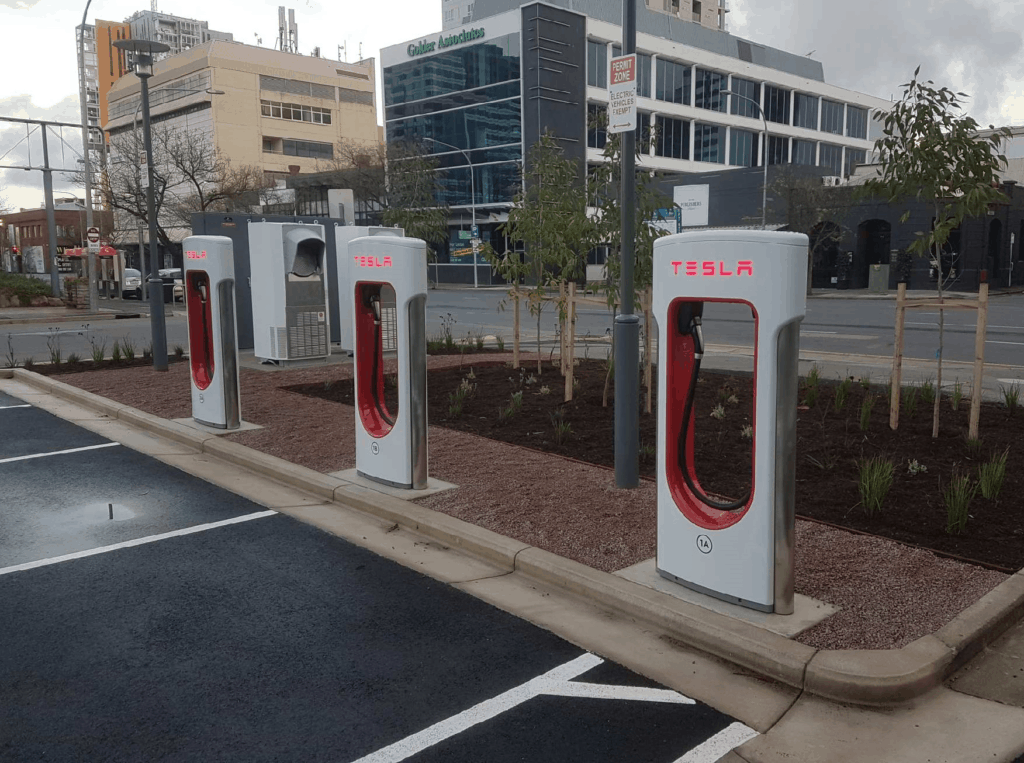
Do Electric Cars Produce EMF Radiation. I have spent many hours of research to give you the best answer in this article.
A quick answer is:
Electric Cars do produce electromagnetic fields. However, these fields are too weak to cause concern
Automobiles have been the hottest selling commodity since the early 1900s.
It is such a big and thriving industry that there are several smaller industries that have popped up just to support the growth of the automobile market.
Several of the top companies of the world today are car manufacturers including the likes of Ford Motors, Mercedes and BMW.
With such a diverse set of companies and the massive width of the market, there is a car for every segment of consumers.
In this day and age, potential customers have a wide-ranging choice when it comes to buying vehicles – including a choice between gasoline and electric cars.
Electric cars have been catapulted to limelight these days, thanks to the global oil crisis and climate change.
Scientists have been clear in indicating that we need to urgently shift from gasoline cars to ones that are powered by renewable means if we are to have a shot at surviving on this planet as a species.
The best alternative to gas cars right now seems to be electric.
Believe it or not, electric cars have been around since 1910. They were quite popular back in the day, especially as the choice of car for women.
But with the drop in Texan crude oil prices, they soon became obsolete. The biggest problem with electric cars was that they were very unappealing to look at.
Traditionally they were designed to be boxy, tacky cars that were rather uncomfortable for long rides. But recently, electric cars have been a sight to behold.
And at the forefront of that is the American company Tesla Motors.
Tesla’s stated goal is to power cars through sustainable means. Their cars run on battery and are a beauty to look at – something that has resonated well with their base.
They produce zero emissions when driving and save you a ton of money overall when you eliminate gas costs.
People have been quick to adopt the cars by Tesla realizing the short supply of fossil fuels and the catastrophe at hand if we don’t switch immediately.
The difference between electric and gasoline cars.
Electric vehicles (or EVs as they’re more commonly called) are powered through a battery.

The battery spins the motor, thus generating power. Gasoline cars use the fuel for combustion, thus creating pressure for movement of the motor.
They are mostly reliant on direct current (DC) for their electrical operations whereas the EVs tend to use AC.
There is contention among people who believe that since AC has a higher frequency and is sinusoidal in nature, people might be more prone to harm if exposed for long periods of time when compared to DC, which is a stable one-way flow of electricity.
The EVs take power from the wall socket (or superchargers) and use it to recharge the batteries on board.
Tesla car charging point.

Batteries operate in DC current so it has a built-in transformer that ‘steps down’ the voltage for the car batteries to use.
Gasoline cars have batteries too. However, they are significantly smaller and only used to start the ignition process in the combustion chamber.
A gas car gets power by injecting fuel into the combustion chamber and then igniting it with the spark plug.
The energy generated moves the pistons around which in turn moves your car.
Gas is the most common fuel for transport today, followed by biodiesel, natural gas, and hydrogen.
Radiation risk from EVs.
Radiation emitted by electric cars are invisible but can be quite deadly.
The repercussions of being exposed to these radiations for a long period of time can be harmful to health and wellbeing.
They have been shown to cause irreparable damage to cells thus causing DNA mutations, infertility, and behavioral issues among others.
As mentioned previously, EVs run on batteries. They do not generate EMF but rather ELF.
ELF stands for Extremely Low Frequency and is basically generated every time something uses a battery for power.
However, it is not that EMF is not generated at all. EMF is still emitted by the various components in the car that come with wireless connection capability.
All cars are now equipped with Bluetooth and cellular service which generates EMF.
Here are some articles I have written on Bluetooth.
- What Is The Side Effects Of Bluetooth Radiation
- Is Bluetooth Radiation As Dangerous As Mobile Radiation
- Can Bluetooth Cause Headaches
- Is Bluetooth Harmful For Babies
- Is Sleeping With Bluetooth Headphones Dangerous
ELF is, as the name suggests, extremely low frequency.
They have a very short wavelength, however, can be dangerous and hamper human biology and environment if exposed for long.
The general rule with radiation is that the further away from the source you are, the safer it is for you.
On an EV, you are literally sitting atop the battery pack which means you are constantly getting bombarded with different kinds of radiation emanating from the car components.
This can have adverse health effects if your immunity system is weakened or if you’re exposed for too long a time and regularly.
It has also been shown to make you emotionally unstable by altering your serotonin levels.
Tesla’s radiation footprint.
Tesla uses the standard 18650 cylinder batteries which are similar to what you’d find on a laptop or tablet.
Tesla packages a bunch of these batteries together, called battery packs, and locks the pack in place below the chassis in order to avoid intrusion.
Tesla has also been in the power game for some time now and most of its batteries today are improved by up to 50% in energy density which is attributed to its long-range.
They are state of the art in terms of performance and stability, however, people still tend to have a lingering concern about if they are indeed safe to drive on the road.
Studies done in UC Berkeley found that these cars may cause cancer down the line (by splitting your cell) due to the increased amount of ELF generated by them.
Studies since then have found correlation between ELF radiation and developing onset depression, miscarriage and certain types of cancer.
ELF has also been shown to increase oxidative stress that can significantly damage the DNA and cause other bodily harm.
World Health Organization (WHO) has labeled electromagnetic fields as carcinogenic in nature to human beings.
They’ve also compiled a list of regulations that companies must follow while manufacturing products so as to limit the emission of EMF radiation.
This has been done in light of tacking the health risks and other physiological problems that may occur from continued exposure.
How much EMF radiation do Teslas emit.
Cars and EMF radiation – then and now.
People spend a great deal of their waking life traveling places. And the most used transportation of all is the private car.
We use cars for all kinds of travel, be it to the school or cross country, and have a wide variety of car types to choose from.
There are the ever-dependable gasoline cars, then there’s the hybrid (which is electric but also has a gas tank) and finally the EVs.
We’ve talked in detail about EVs and how ELF radiation from EVs can be dangerous to our health and wellbeing.
However, there is a plethora of radiation that gets emitted from the gas cars also that we need to consider.
In this section, we take a look at the kinds of radiation we must be mindful of and try to understand the physics that make cars so dangerous from a radiation standpoint.
The car emits all kinds of EMF signals from its communication devices onboard like the Bluetooth, push-button start and dashboard controls.
They are mostly RF in nature and in the microwave frequency. They are further amplified by the frame of your car.
With the advent of new technological breakthroughs like self-driving capability and 5G connection, the dangers of radiation are increasing at an alarming rate.
EMF radiation has been studied to cause drivers to feel groggy, thus increasing their chances of getting into accidents.
This is a major cause of concern among doctors and scientists alike. The study concluded that people who were exposed to these sorts of radiation on a regular basis fell asleep 50 minutes faster on average than people who weren’t.
Car EMF radiation has also been linked to blurry vision, headaches and increased risk of DNA mutation (and thus cancer).
This is especially true for owners of electric cars since they are so close to the battery pack.
Car design and EMF impacts.
Cars are traditionally designed to be made out of metal in a way that all sides are enclosed in a metal frame.
There are obviously exceptions to this such as convertibles and soft tops, but most cars in the market are built around a metal frame.
In physics, this sort of an enclosure is commonly referred to as a Faraday cage.
The science of it is simple enough – it is a conductive cage that doesn’t allow radiation (or electrostatic charges) to get in or out.
The radiation that is generated inside the car is contained and over time amplified within this structure.
While cars are not perfect Faraday cages and there’s plenty of room for radiation to leak out of come in, it is still quite a step up from the radiation exposure you’d expect from your phone or laptop.
The many communication devices built in the car also add to the total radiation generated thus bombarding you with radiation exposure at very short distance.
This or that.
Your choice of vehicle depends on what is more important to you. You can choose a Tesla and reduce your carbon footprint or a gas-powered car and reduce EMF radiation.
But what should you choose? Which of these pollutants do you need to be more concerned about? These are difficult questions, the answers for which lies with the individual.
Tesla advertises itself as zero emissions which is not entirely true. Their massive lithium-ion batteries produce more carbon emission than a regular gasoline car during production.
However, if you took a look at the total life of the vehicle, EVs produce only half as much emission as a gas car, while producing zero emissions while driving.
With gas cars, carbon monoxide is a serious problem. Hundreds of people die every year because of carbon monoxide poisoning and there is little regulation to control its abundance in nature.
Gas cars produce carbon monoxide by burning the fuel and thus not only harms the environment with pollutants but also affect human lives with deadly carbon monoxide emissions.
Both cars have significant EMF radiation footprint and there is little you can do to help. In addition to that, EVs also generate ELF radiation that further gets amplified while being inside the frame of the car.
The idea is to reduce emissions however you can and the first thing is to limit the distance and total time spent in your car.
Understand that it might be a health hazard in the long run and don’t attempt going cross country in the summer like in your favorite movies.
Also, try and limit the usage of electronic devices when you are inside your car. Turn off your phone or switch to Airplane mode so that the cell phone doesn’t generate additional radiation trying to connect to a cellular tower.
Also, limit the usage of electronics inside the car such as the internet music system, online navigation and more.
You don’t have to get rid of your car just because it produces radiation. They all do and there’s unfortunately nothing we can do about it.
However, with some caution, we might be able to circumvent the bad effects of radiation on ourselves and our families.
Related questions.
What is a hydrogen car?
A hydrogen car is a special type of hybrid car that uses hydrogen as its primary source of fuel.
Hydrogen is compressed into tanks and fed into the combustion chamber much like gasoline and ignited through a special spark plug.
The pressure generated moves the pistons, thus driving the car.


